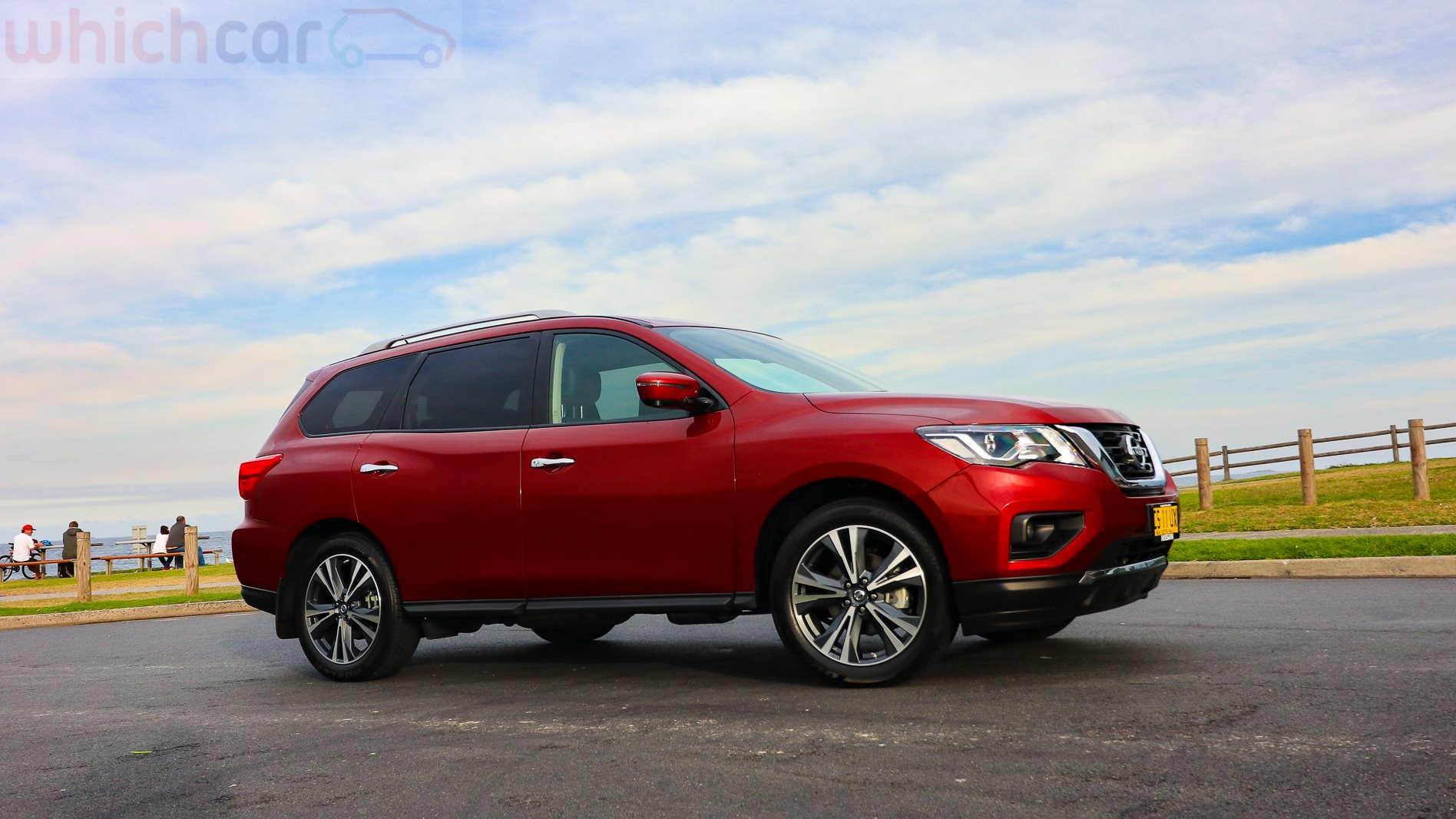
When the fourth-generation Nissan Pathfinder launched in Australian in 2013, it wasn’t exactly met with rapturous applause from previous owners.
Beloved for its rugged simplicity and off-road chops, the body-on-frame design of the third-gen car made way for a more car-like unibody build based on the same front-wheel-drive platform as Nissan’s Altima and Maxima sedans.
What’s more, the US-centric styling both inside and out polarised the buying public.
Some five years on, and the Nissan Pathfinder has been tweaked and prodded for the new year with additional safety equipment across the line-up. What better reason to get reacquainted?
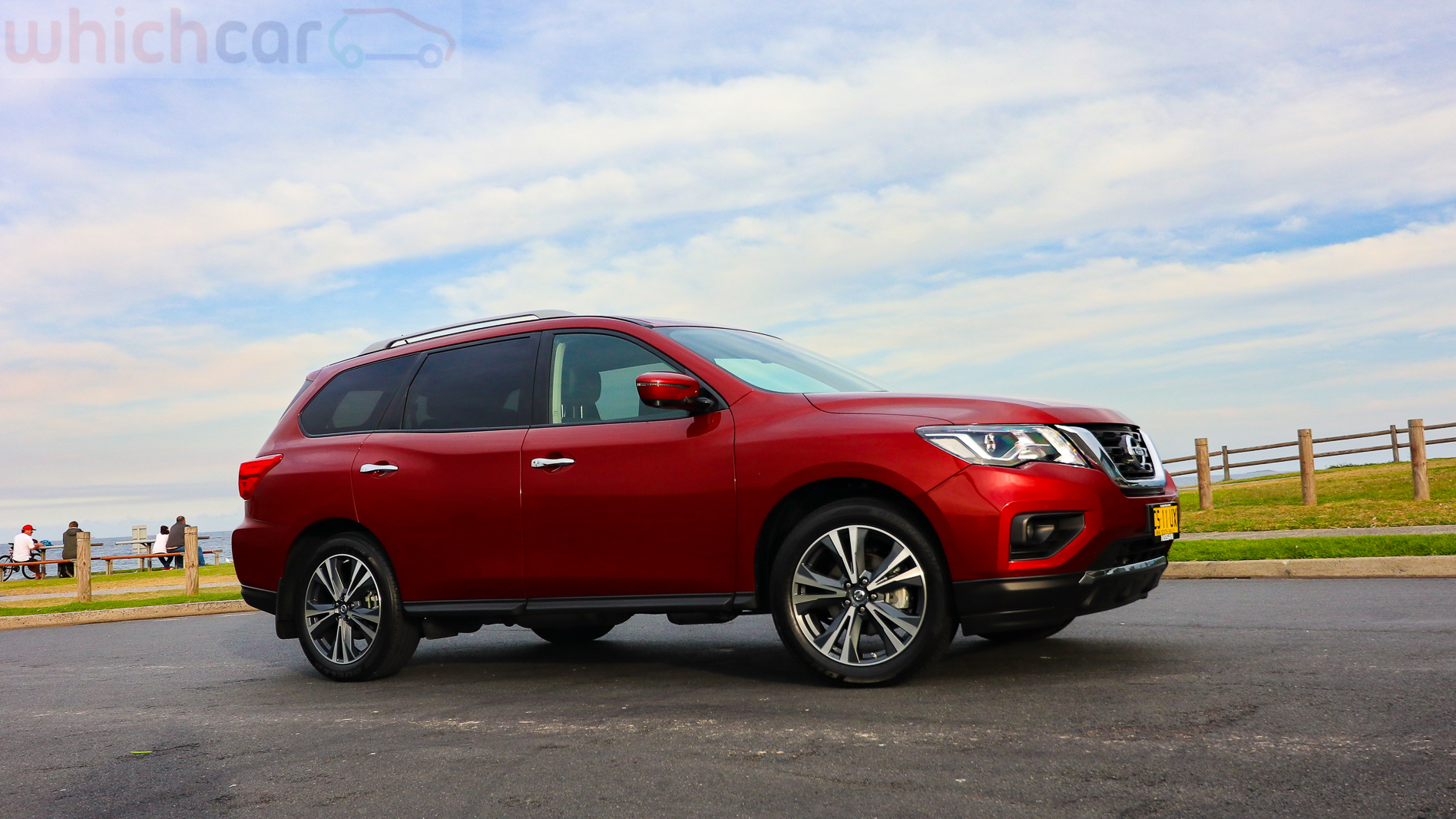
Style
While the change between the boxy third-gen car and the curvaceous fourth-gen Pathfinder was marked, the passage of time has been reasonably kind to the car. Its biggest crime, really, is a sense of anonymity and sameness that sees it all but become invisible out in the general population.
The front end errs on the right side of overstyled, but the rear’s exaggerated haunches do detract from the Pathfinder’s profile.
The interior design, meanwhile, is starting to show its age, with swathes of plain soft-touch vinyl interspersed with a scattergun approach to buttons and controls. Between the centre console and the steering wheel, there are more than 40 individual switches!
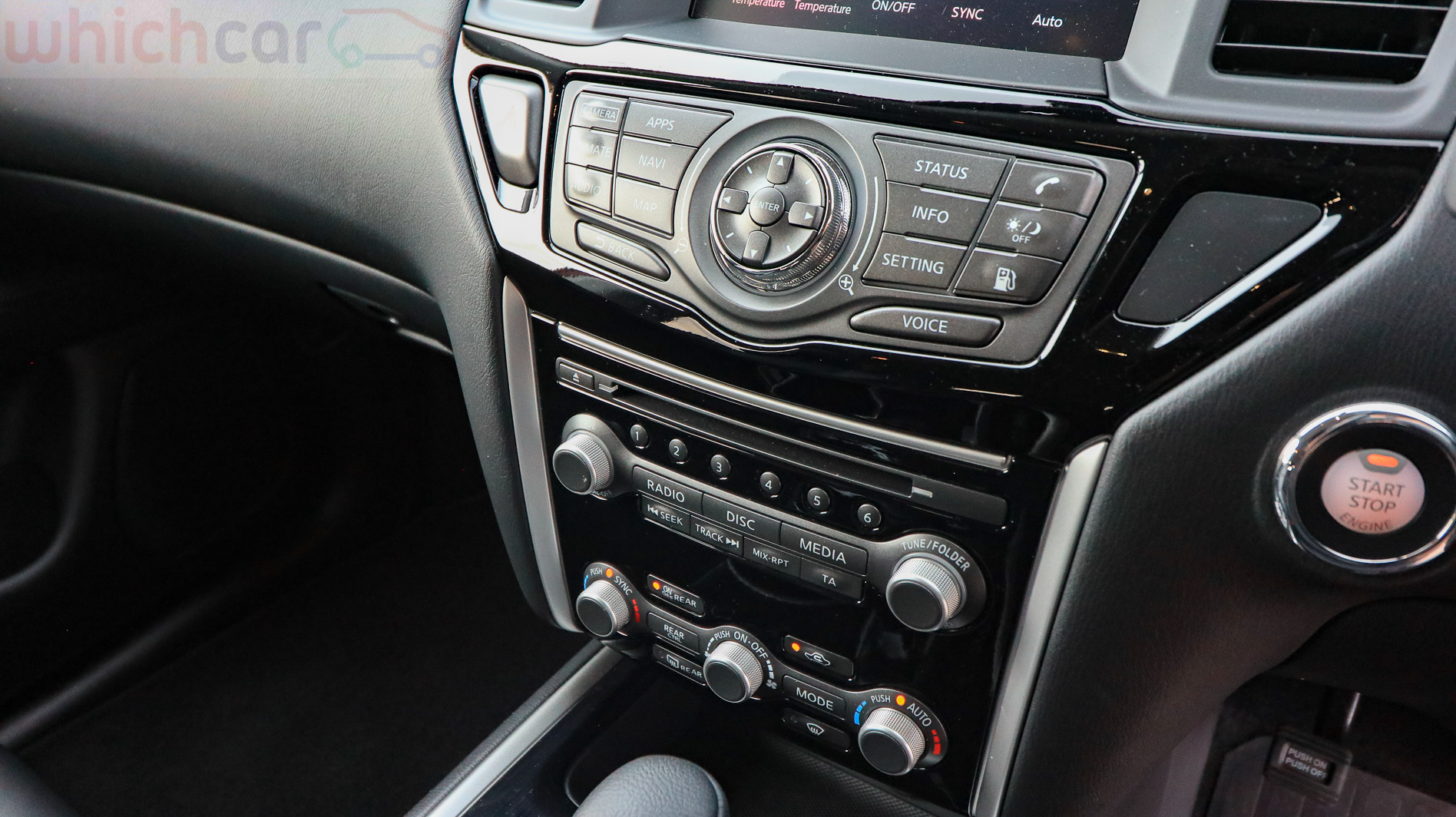
Specs and value
We’re testing the Ti 3.5L V6 4WD, which costs $66,390 plus on-roads. The same powertrain can be had in the base ST for $46,890, by way of comparison. The range has seen a slight price bump for 2019, but only by a few hundred dollars here and there.
That powertrain is the 202kW/340Nm 3.5-litre V6 petrol engine as seen in cars like the 370Z. It’s teamed with a front-biased AWD system run through a CVT gearbox, and it offers full-time AWD, a front-wheel-drive option and a 50/50 front/rear locking mode for speeds under 40km/h.
The top-spec Ti comes with plenty of gear, including seven leather-accented seats, twin sunroofs, LED headlights and daytime running lamps, automatic lights and wipers, keyless entry with remote start, a powered steering column, heated front and rear seats, multiple USB and 12v charge points, powered hands-free tailgate and tri-zone Bose stereo with screens in the headrests and wireless headphones.
The multimedia screen is eight inches across and offers sat-nav, but there is no Apple CarPlay or Android Auto. There is, however, a single-slot CD/DVD player which may please some.
Outside, 20-inch rims are stock, along with folding rear-view mirrors, roof rails and fog lights.
Our tester had just a couple of options fitted, including a $1460 towing kit (it’ll lug 2700kg of braked trailer) and $550 worth of red paint, for a total of $68,445.
The Pathfinder butts up against stiff petrol-powered competition in the large SUV class, like the $69,246 Toyota Kluger Grande, the $67,490 Holden Acadia LTZ-V and the Mazda CX-9 Azami LE at $68,232.
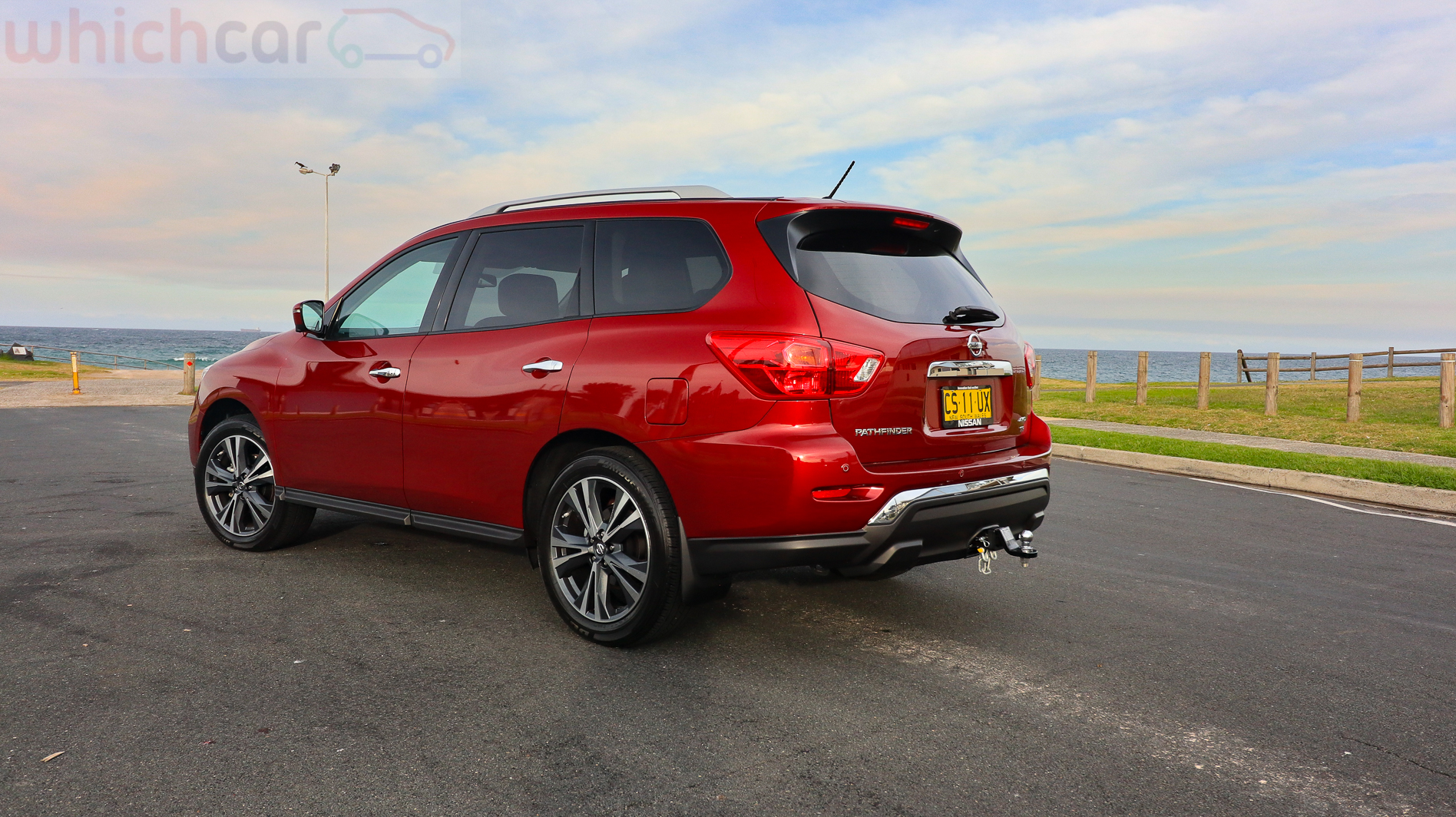
Size
At first blush, the Pathfinder doesn’t look all that big but open the doors and the impression disappears into its cavernous interior. It sits five in luxury and seven in comfort, with clever split-function folding seats on the second row for relatively easy access.
The Pathfinder holds 453 litres of luggage with all three rows of seats up, which is damn impressive. It holds 1354 litres with the third row down, and a huge 2260 litres with the seats laid flat. Compare this to the 195/529/1872-litre figures of the Kluger, for example, and it’s easy to see the Pathy wins the space race.
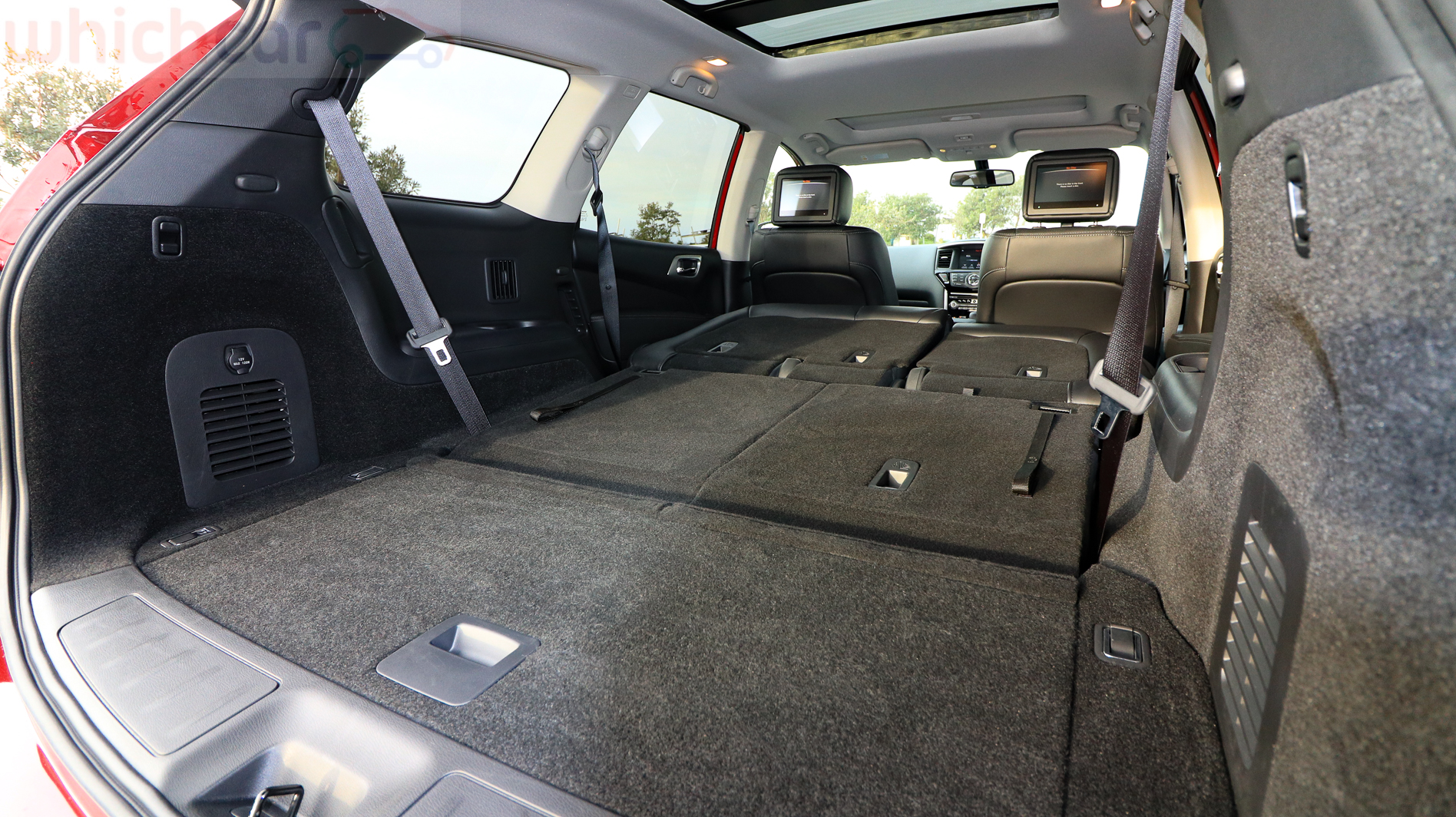
Safety
Six airbags including full-length curtain bags to the third row are standard fitment on the Pathfinder, along with a 360-degree camera, rear-view camera and parking sensors front and rear.
In terms of driver aids, the Pathfinder Ti scores AEB, rear cross-traffic alert, adaptive cruise control, tyre pressure monitoring and blind-spot warning. It also features a rear-seat alert, which activates if the rear doors are opened and closed before the driver sets off.
A visual prompt urges the driver to check the rear seats if the doors are not opened, while the horn will sound three times if the driver exits the Pathfinder and locks it.
A big minus in our books, though, is a complete lack of any sort of spare wheel, with Nissan adding only an inflator kit (below left) to the boot of the Pathfinder.
ANCAP has awarded the Pathfinder the maximum rating of five stars.
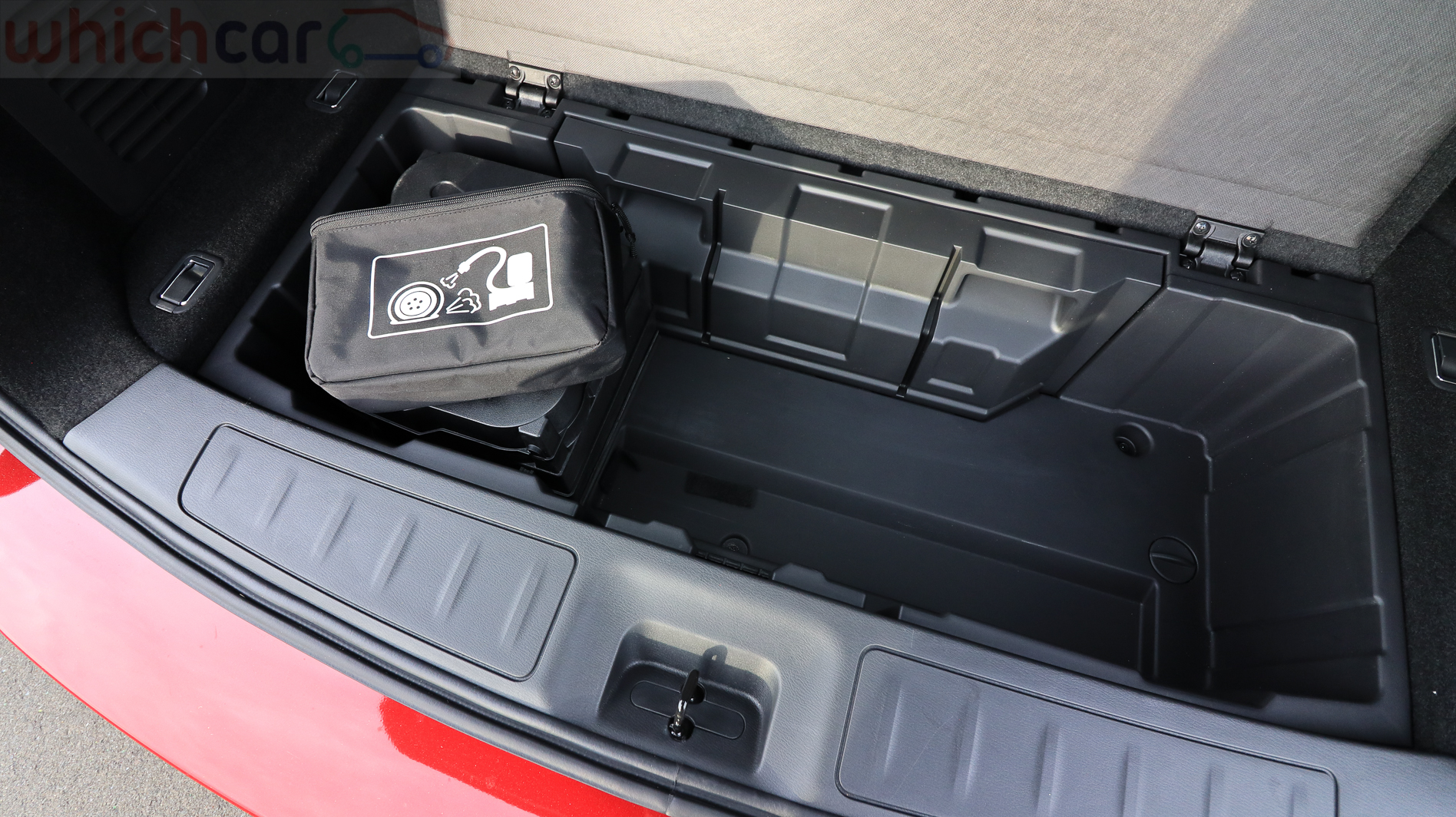
Warranty and running costs
Nissan has finally joined the throng and is now offering a five-year, unlimited kilometre warranty on its cars, Pathfinder included.
Service intervals are a little shorter than the average at 10,000km or 12 months, while capped price services costs are very competitive. The first four services, for example, will cost $1333.
When it comes to fuel use, the 3.5-litre petrol engine is claimed to drink 10.1 litres per 100km on the combined fuel economy cycle. Our 320km of testing revealed a figure closer to 10.7L/100km for the 2089kg Ti. Its 73-litre tank is perfectly happy with 91 octane fuel, too.
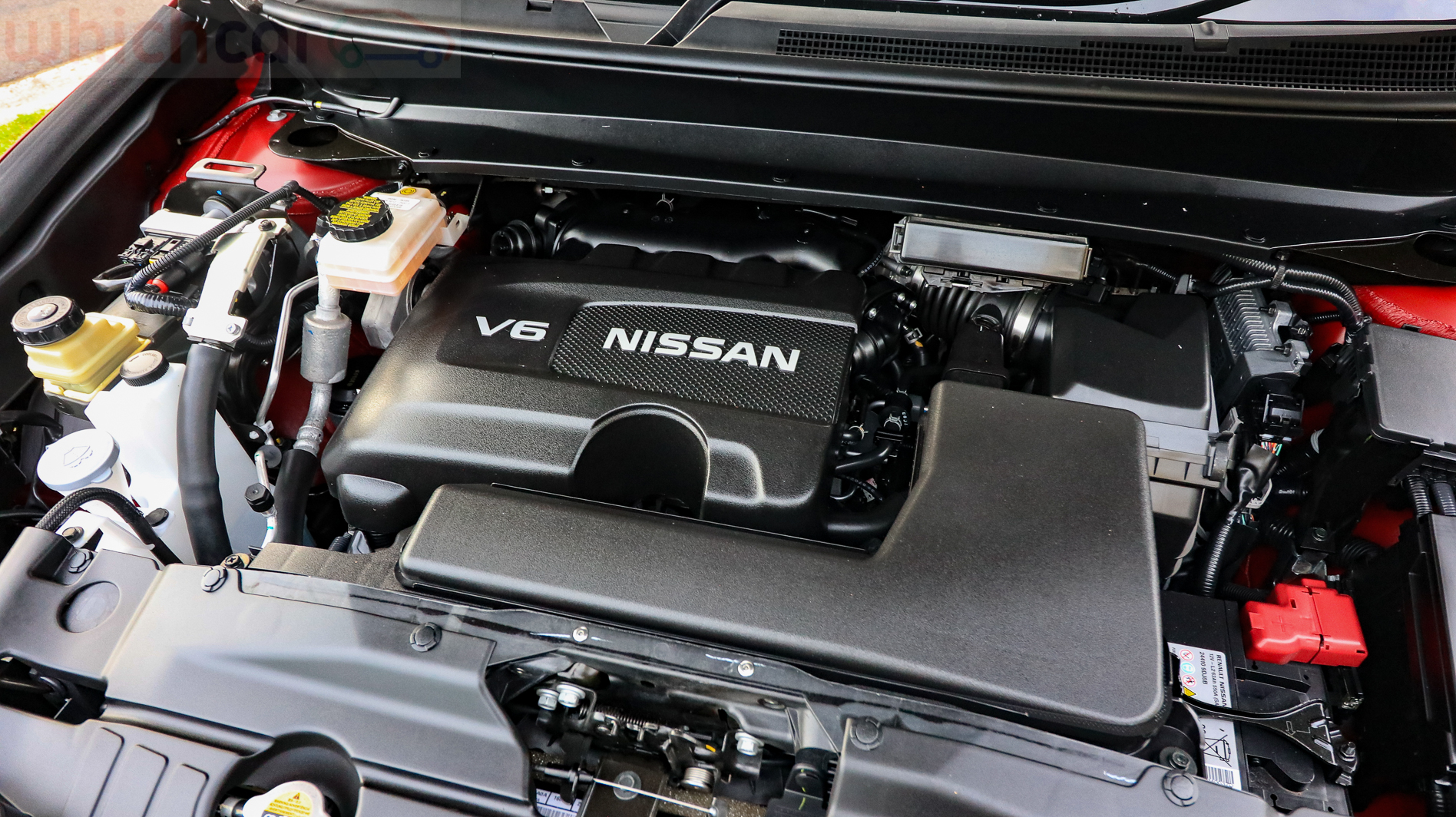
Comfort
As mentioned, the Pathfinder is a big bus, and hence comfort levels are pretty high. The seats are broad and soft, touch points are padded and there are plenty of places to stash, stuff and charge things.
The third row seats are relatively easy to access, and the full-length bench style seating and large headrests make for a comfy, if ideally short-lived, experience. There are air vents and cupholders back there to make the journey more bearable.
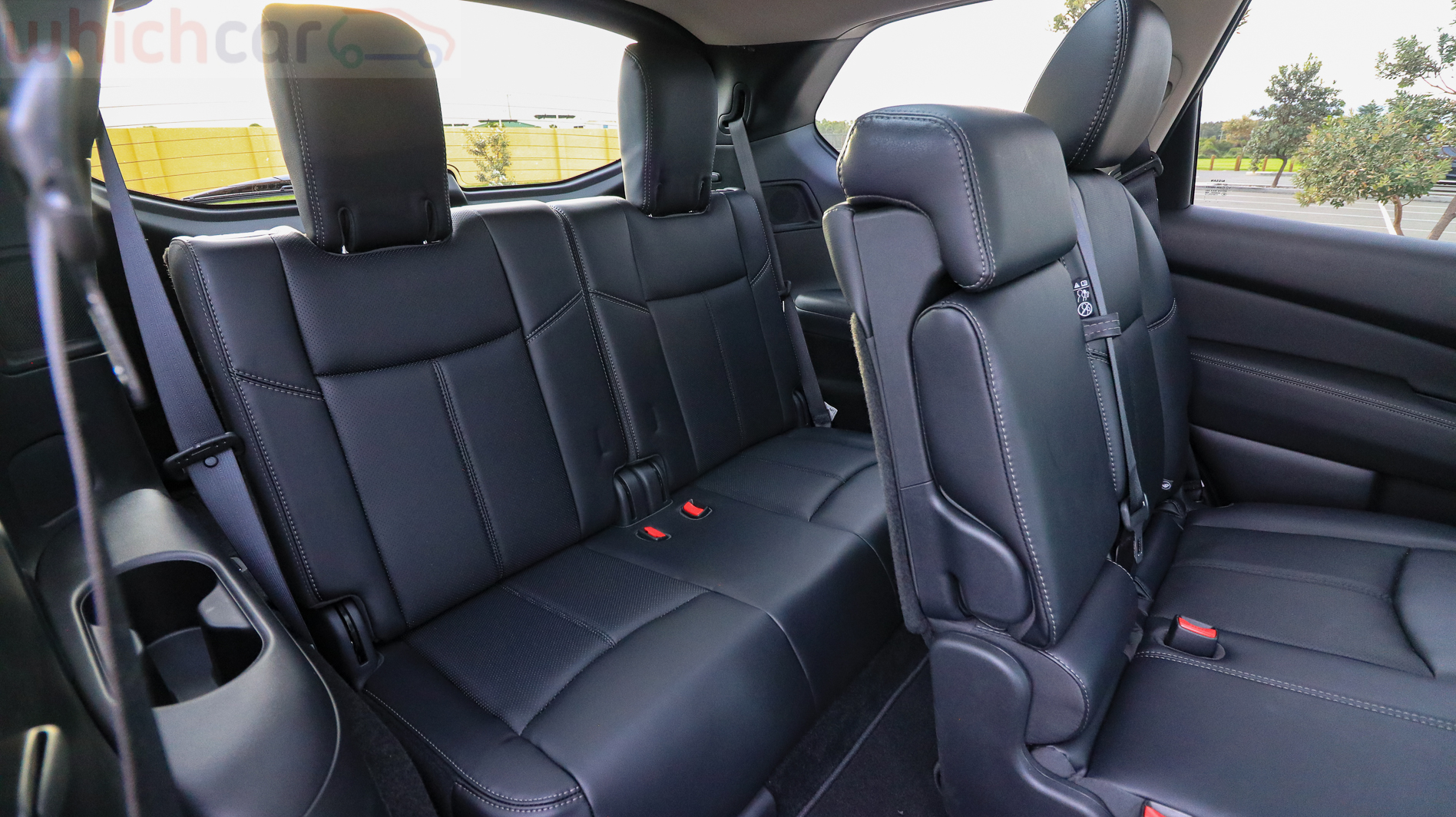
Up front, the seats verge on a little too soft in the base, but they still hold up over 100km-long stints quite well. The powered steering column and seat memory slots make short work of getting comfy behind the wheel, though the plethora of buttons is annoying and fiddly to negotiate.
Visibility throughout is more than fine, thanks to the Pathfinder’s airy glasshouse, though the big, steeply raked A-pillars can impede forward vision.
The ancient foot-operated park brake is an annoyance, as is the lack of Apple CarPlay.
It’s easy to load up the Pathfinder with all of a family’s gear, too, and the seats are easy to drop.

On the road
It’s easy to like the Pathfinder’s road manners, but it’s also easy to forget them. Nissan revised the suspension tune to make it a bit firmer for Aussie conditions, and while it’s still soft, it’s decently mannered for around-town work.
There’s an inherent suppleness to the first part of the MacPherson strut front/multilink rear suspension’s travel, but it resists body roll and pitch/dive admirably well at regular road speeds.
Steering effort is minimal, thanks to the electrically assisted set-up, and the brake feel is actually terrific, with lovely modulation and plenty of bite underfoot.
The V6 engine is smooth, eager and vice-free, while the CVT gearbox does a very good job of disguising its origins. We didn’t sample the 50/50 locking mode this time around, but the stock Bridgestone Dueler tyres and 20-inch rims mean that while you’ll get down to that gravel road to a secluded beach spot, clambering up to a remote lookout is a bit beyond the Pathfinder’s brief.
Country driving is made easier by the addition of the easy-to-use adaptive cruise control system, and the Pathfinder is impressively free of outside noise intrusion into the cabin.
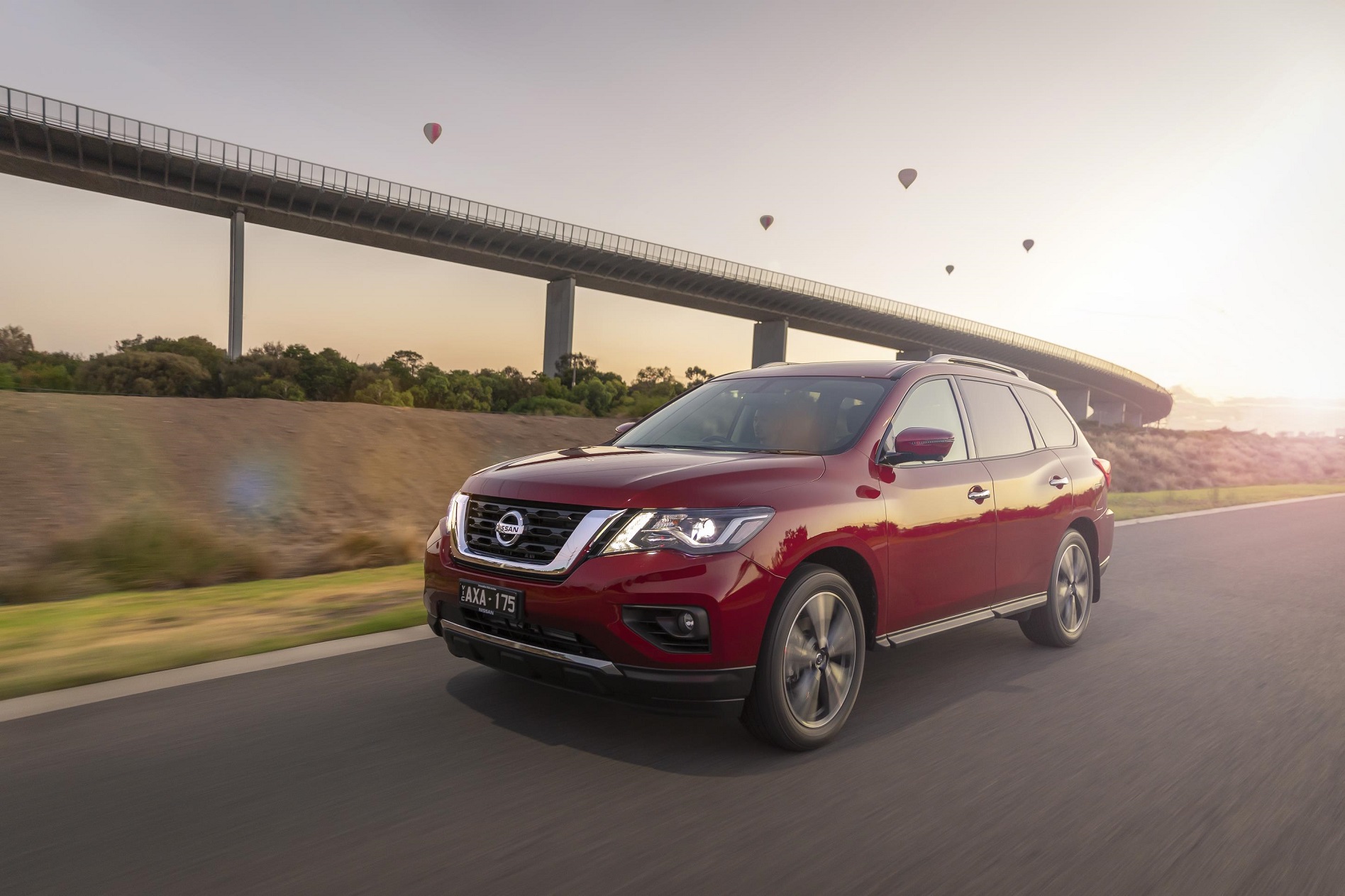
Verdict
It’s getting on a bit, but the Pathfinder is an honest and simple rig that’s well suited to a larger family. Its nondescript design and dated interior treatment won’t suit everyone, and I think that the more affordable end of the Pathfinder model range provides better value than the premium-priced Ti.
Nissan Pathfinder Ti AWD
Engine: 3498cc V6, dohc, 24v Max power: 202kW @ 6400rpm Max torque: 340Nm @ 4800rpm Transmission: CVT automatic Weight: 2068kg 0-100km/h: 8.0sec (estimated) Economy: 10.1L/100km Price: $66,390 (4WD)



